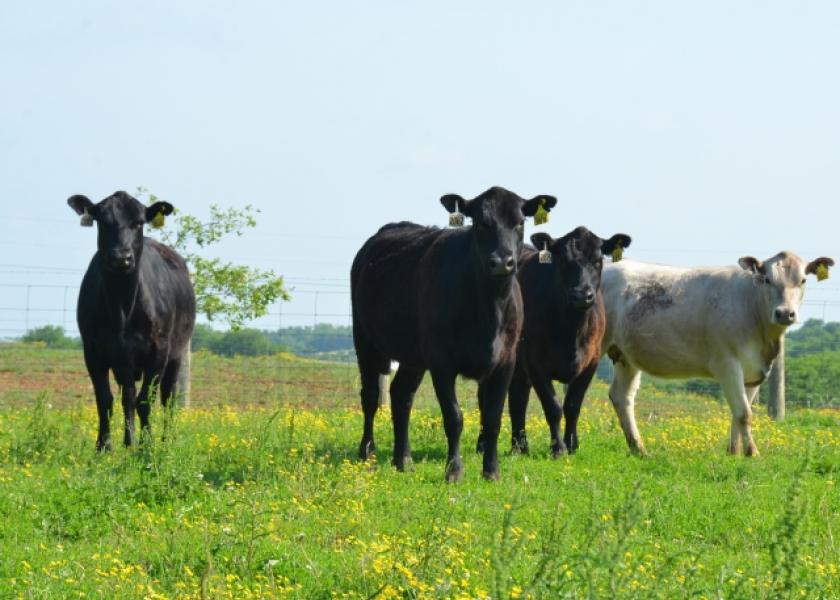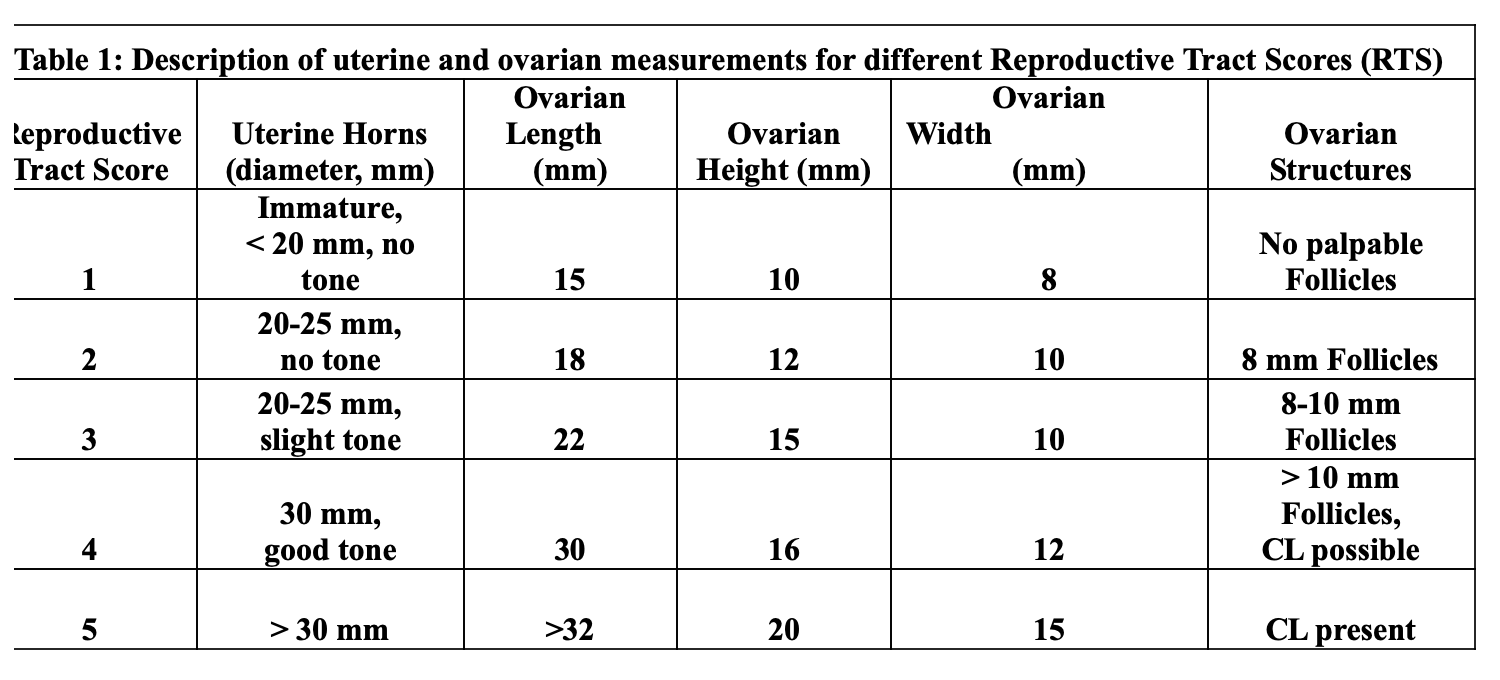Reproductive Tract Scoring in Replacement Heifers

Reproductive Tract Scoring (RTS) is a subjective measurement which involves the rectal palpation of the heifer reproductive tract (uterine horns and ovarian structures) and the subsequent assignment of a reproductive tract score, ranging from 1 to 5 (1 = immature; 5 = presence of a corpus luteum), to assist the producer in making replacement heifer decisions. Since age at puberty is difficult to measure directly, RTS can estimate pubertal status, and if performed before the onset of the breeding season, can be a predictor of heifer reproductive performance allowing for heifers with a poor breeding potential to be removed from the breeding group before any further costs are incurred. The RTS system has been shown to a repeatable measure between and within practitioners and to be moderately heritable (0.32 + 0.17).
A RTS of 1 is refers to a prepubertal heifer, a RTS of 2 or 3 is refers to a peripubertal heifer (transitional stage), and a RTS of 4 or 5 is refers to a pubertal (cycling) heifer. The reproductive performance of heifers with an RTS of 1 or 2 is less than that of heifers with an RTS of 3 or greater. Heifers with a RTS of 1 or 2 are less likely to be cycling at the beginning of the breeding season and therefore are less likely to become pregnant or if they do become pregnant, do so later in the breeding season suggesting that heifers with a RTS of 1 should possibly be eliminated from the breeding group. It is worth mentioning, that some heifers do not exactly fit a particular RTS score and it is up to the producer and/or practitioner to decide on which of the measures are to be given the most emphasis.
RTS should be done about 1 month or less prior to breeding if the score is to be used as a culling tool as an indicator of a heifer's ability to conceive early during the first breeding season. If RTS is to be used as a selection tool to place pressure on age at puberty, the best time to evaluate the heifers is when approximately 50% of the heifers are thought to be cycling based on age, weight, and occasional observations for estrus.
Another possible application of the RTS system is to assess the nutritional program being utilized by the producer. If RTS is taken within a sufficient time before the start of the breeding season (approximately 30 to 60 days); based on the results of the tract scores, the producer can adjust the ration to help the heifers reach developmental goals prior to the beginning of the breeding season or the beginning of the breeding season can be adjusted.
The uterine and ovarian dimensions for each of the reproductive tract scores are described in Table 1. The reproductive tract score is based on the degree of uterine horn development and ovarian status (size of dominant follicle and presence or absence of a CL).

Dr. Daniel Stein is an Oklahoma State University Extension Reproduction Physiologist.







